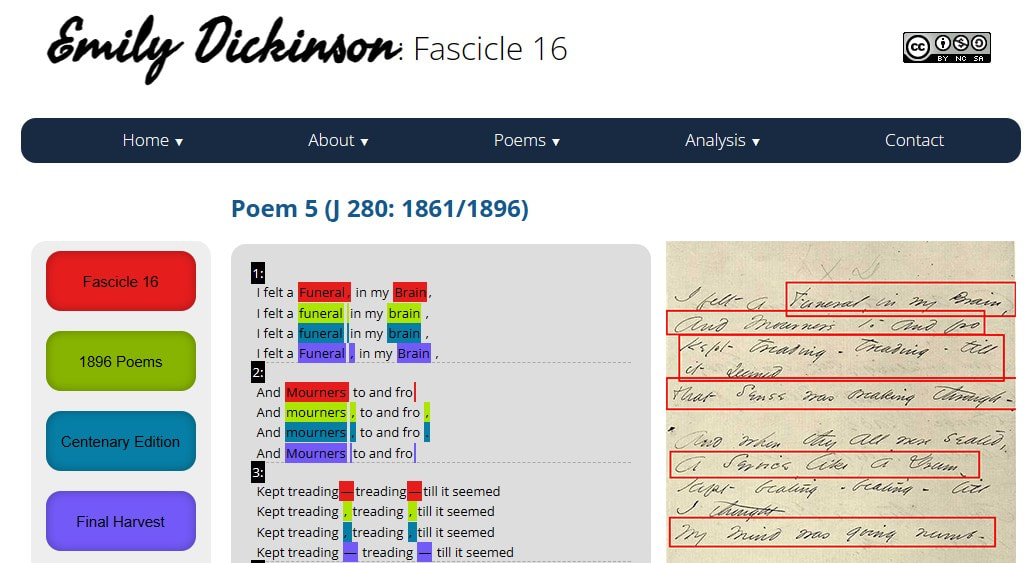Yesterday I touched on Dickinson’s use of the dash, and one site I found stated, “Most of Emily Dickinson’s poetry contains anywhere from eight dashes, as seen in poem 269, which begins ‘Wild Nights — Wild Nights!’ to 48 dashes, as seen in poem 522, which starts with the line ‘I tie my Hat—I crease my Shawl—’”
I posted both the Franklin version of “I tie my Hat” – with 41 dashes – & the Johnson version – with 48 dashes (because of the inclusion of 5 additional lines) – but then I glanced through my Johnson version & saw that poem J430 “It would never be Common – more – I said –” included 60-plus dashes!
I don’t know if that’s the poem with the most dashes; I just happened to notice that it had quite a number of dashes as I flipped through the pages.
I did run a Google search on “What poem by Emily Dickinson includes the most dashes?” and though no specific answer/poem popped up – take a look at this site that shows “Percentage of Dash Reduction in Published Versions Compared to Originals”: Click HERE.
That’s right: Early publications of Dickinson’s poetry changed her punctuation (and spelling and capitalization and rhymes, etc.) – and in many cases they omitted most or all of her dashes.
On the site I linked above, click on the top banner option “Poems” (with the down-arrow), and you can see analyses of individual poems in the fascicle. For example, poem 1605 is “I felt a Funeral in my Brain.”
Then click on the colored tabs on the left (which name the various editions), and you can see line-by-line comparisons on how these early editions altered Dickinson’s punctuation.
Very cool (if you happen to be a Dickinson nerd like me). LOL).
Fin.
Part 1 is HERE; Part 3 is HERE.

 RSS Feed
RSS Feed
